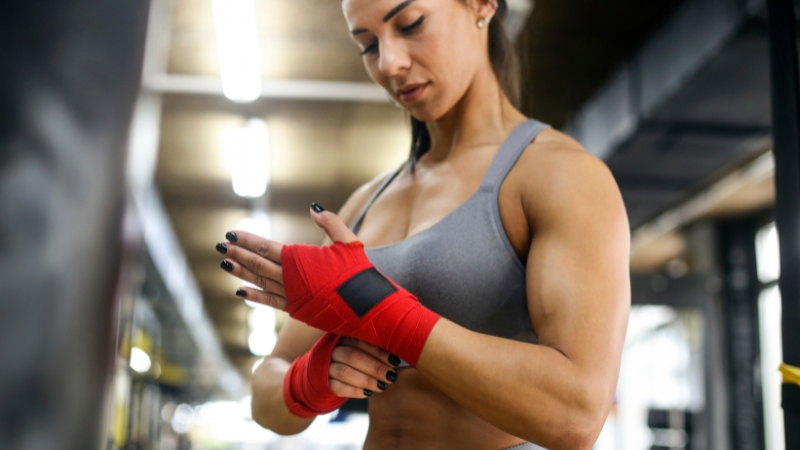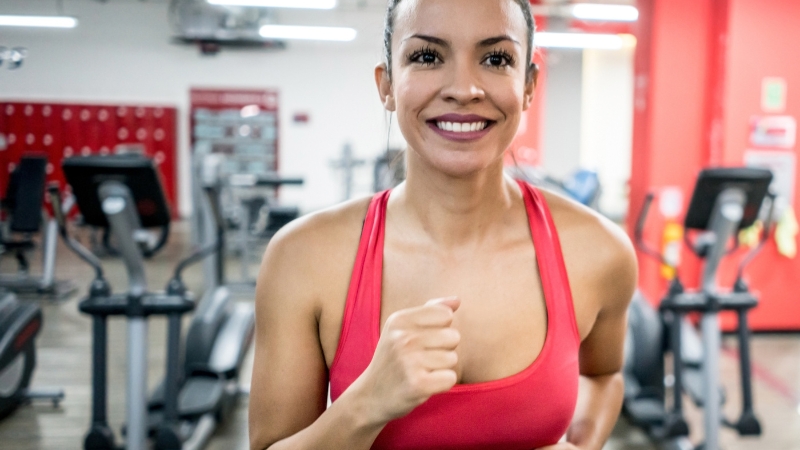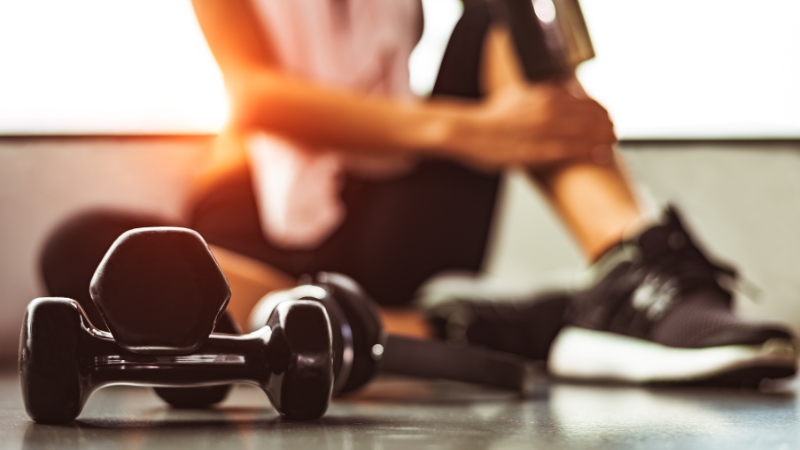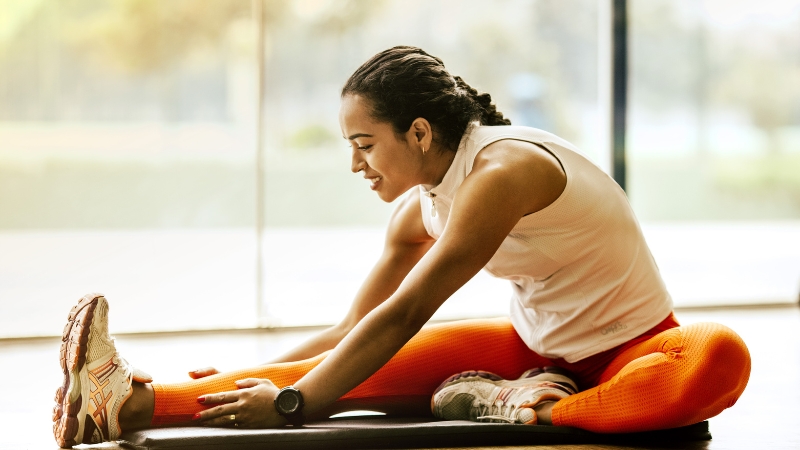
Share Post:
Waking up with a tight chest, a racing mind, or that subtle feeling of unease can be more than just “not being a morning person.” For many, mornings bring a spike in anxiety. There’s a reason for that: your body’s natural cortisol levels are highest right after you wake up.
It’s part of the cortisol awakening response, designed to get you going – but it can also leave you feeling overwhelmed before your feet even hit the floor.
There’s a gentle way to soften that tension and reset the tone for your day: morning stretching.
It’s not about turning your bedroom into a yoga studio or committing to a 90-minute practice. It’s about taking five to ten minutes to check in with your body and give your nervous system a chance to breathe.
Below is a breakdown of practical, beginner-friendly morning stretches that help ease anxiety, plus a few simple tools to make the most of that quiet time before the day begins.
Table of Contents
ToggleWhy Morning Stretching Helps Ease Anxiety

The body holds onto stress. Even after a full night’s sleep, muscles can feel tight, especially in the back, neck, and shoulders – areas that quietly carry a lot of emotional weight. Gentle stretching helps loosen that grip.
Here’s how stretching helps:
Benefit
What It Does
Improved Flexibility
Increases range of motion, helps with physical ease during daily tasks
Reduced Muscle Tension
Relieves tightness from sleeping positions and emotional stress
Enhanced Circulation
Increases blood flow and oxygen to the brain for sharper thinking
Stress and Anxiety Relief
Activates the parasympathetic nervous system, promoting calm
Better Sleep Quality
Encourages more restful nights through evening relaxation routines
According to the National Alliance on Mental Illness, more than 40 million Americans experience anxiety disorders. Many of them say mornings are the hardest time.
By making space for a brief morning stretch routine, you can help regulate cortisol, clear mental clutter, and prepare your body to take on the day – without the tension.
And if anxiety still persists, consulting a Psychiatrist can provide personalized strategies and support.
8 Simple Moves for a Calmer Start
The sequence below takes about 5–10 minutes. You don’t need equipment, and most of it can be done right out of bed. Each stretch targets common tension points while gently grounding you in the present.
1. Knees-to-Chest Stretch
Lie on your back with legs extended. Bring one knee at a time to your chest and gently hug them in. You can rock side to side for a massage effect across the lower back.
While seated or standing, extend your arms straight forward. Clasp your hands together and gently round your back as you press your palms away from you. Kneel on the floor, then sit back on your heels. Stretch your arms out in front of you and let your forehead rest on the ground. You can widen your knees for more comfort. Sit tall or stand. Let one ear fall gently toward the same-side shoulder. Use your hand to apply light pressure if needed. Switch sides. Stand with feet hip-width apart. Hinge at the hips and let your upper body hang. Knees can be soft or bent. Lie face down with palms under your shoulders. Press into your hands and lift your chest slightly. Keep hips grounded. Lie on your back. Bring one knee across your body while keeping your shoulders flat. Look toward the opposite side. Repeat on the other side. Pick a quiet space. If you can, keep your phone out of reach. Use soft natural light or a warm lamp. Some people find it helps to play ambient music or nature sounds in the background. Connecting your feet to the floor, even if just for a few minutes, can have grounding effects. If your space is cold, a yoga mat or blanket will work just fine. Let your breath guide each movement. Inhale as you expand, exhale as you settle deeper into a stretch. Keep it slow and steady. This helps activate the parasympathetic nervous system, which controls your body’s rest and relaxation response. Notice where your body feels tight, where it feels light. You’re not trying to achieve a perfect pose - just reconnecting with yourself before the day takes over. You don’t need to overhaul your morning routine. Start small. Try two or three stretches the first few mornings. Once that feels good, add more. You might even find yourself craving the routine after a while - not because it’s required, but because it feels like home base before things get hectic. Consistency is more valuable than perfection. Even if some mornings feel rushed, showing up for 60 seconds of stretching still makes a difference. Stretching works beautifully on its own, but it can be part of something larger. You can fold in other calming practices to build a supportive morning routine. Just 3–5 minutes of structured breathing can shift your mood entirely. Try box breathing: Repeat 4–5 times. It’s simple, free, and often overlooked. Even a 5-minute seated meditation can reduce mental clutter. Apps like Calm or Insight Timer offer gentle guidance. One popular option: Jeff Warren’s “Breathing With Affection” meditation on Calm. No pressure to “clear your mind” - just sit and notice. If you have a bit more time, a mini yoga flow can bridge stretching and mindfulness. Moves like downward-facing dog, warrior II, or pigeon pose can wake up your body while calming the mind. INTEGRIS Health notes that even 5 minutes of yoga can support sleep and stress relief. Here’s a sample combo routine: All in, you’re looking at 15–20 minutes. Enough to reset your morning without derailing your schedule. Anxiety might show up uninvited, but how you respond matters. A few mindful stretches each morning can interrupt that cycle and offer something softer: space to breathe, room to move, and a steadier start. The key is to keep it approachable. You don’t need to be a yogi, a morning person, or even flexible. Just willing to show up for yourself - quietly, gently, and consistently. Start with what feels manageable. Maybe it’s knees-to-chest and a neck stretch. Maybe it’s the whole sequence. Whatever you choose, let it be yours. And if anxiety still hangs around, that’s okay. You’re giving yourself the tools to meet it with more ease. No need to perfect the routine. Just let it be a place you return to. A few quiet moments. A deep breath. A stretch that says, “I’ve got this.”
2. Upper Back Stretch
3. Child’s Pose
4. Neck Stretch
5. Standing Forward Bend
6. Cat-Cow Stretch
Start on all fours. Inhale to arch your back, lifting your head and tailbone (cow). Exhale to round your spine and tuck your chin (cat). Flow gently between the two.
7. Cobra Stretch
8. Spinal Twist
4 Tips for a Calming Stretch Routine
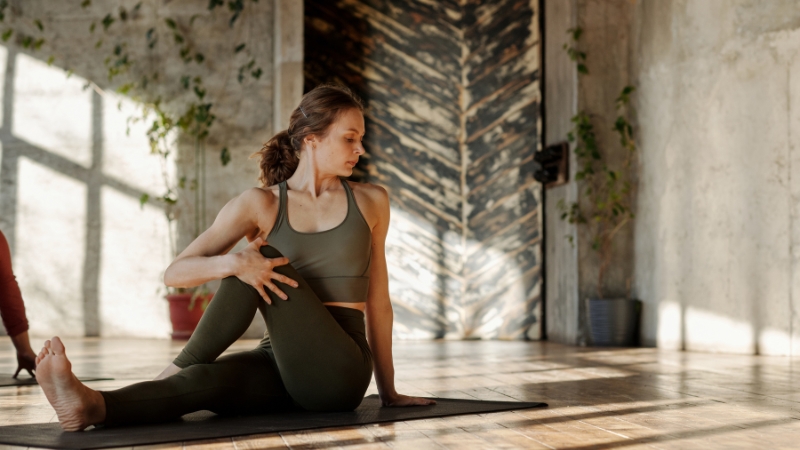
1. Create a Calm Environment
2. Go Barefoot
3. Use Breath as Your Anchor
4. Stay Present
Building the Habit
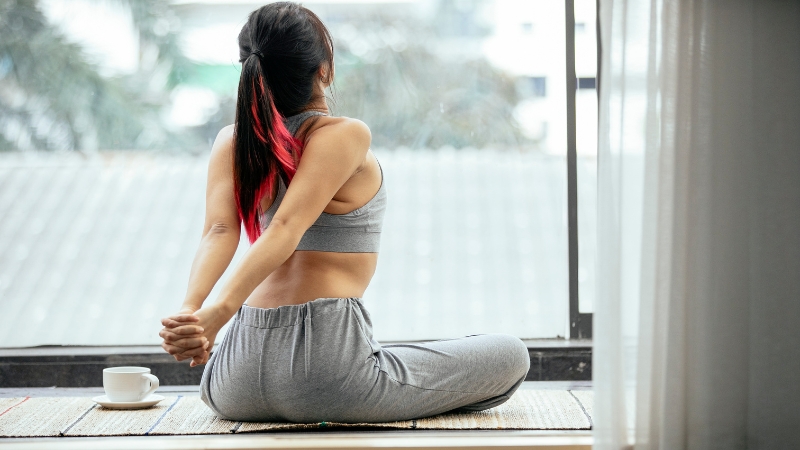
Pairing Stretching With Other Mindful Tools
Breathing Exercises
Short Meditation
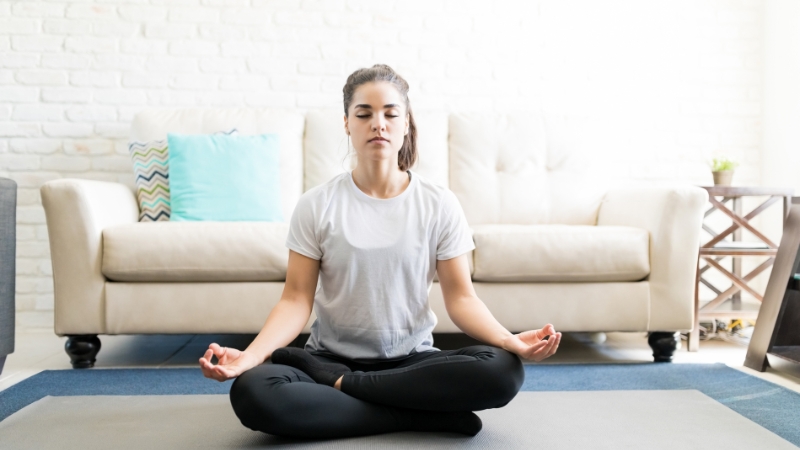
Gentle Yoga
Activity
Duration
Deep Breathing
5 minutes
Stretch Sequence
8–10 minutes
Seated Meditation
5 minutes
Wrapping Up

Related Posts:




